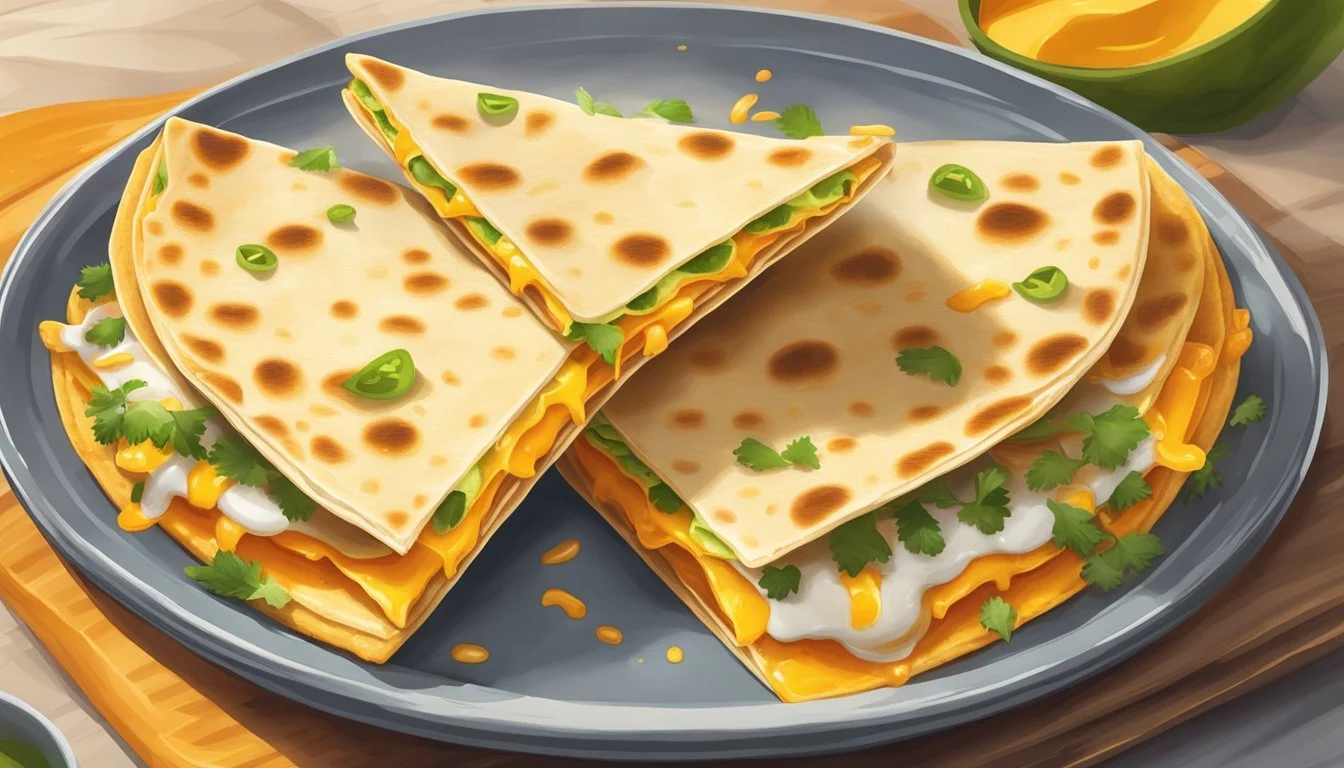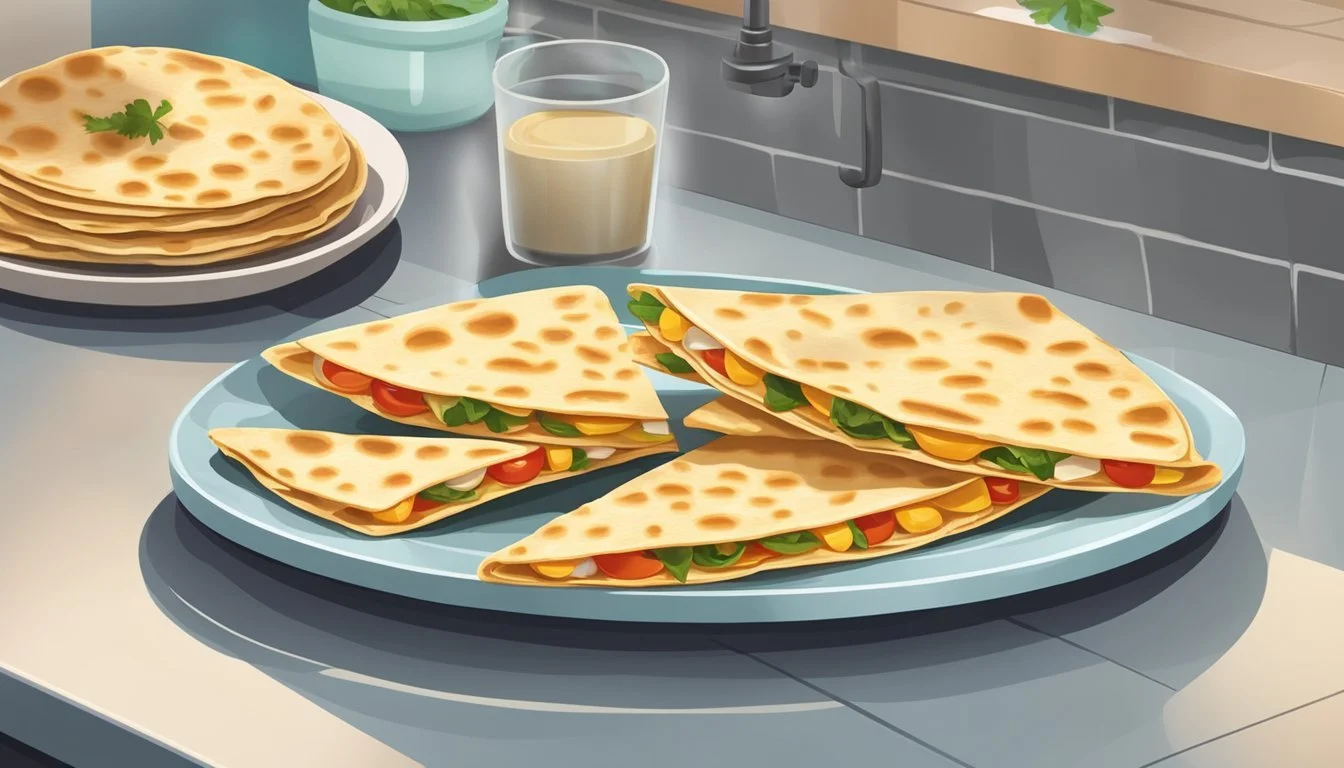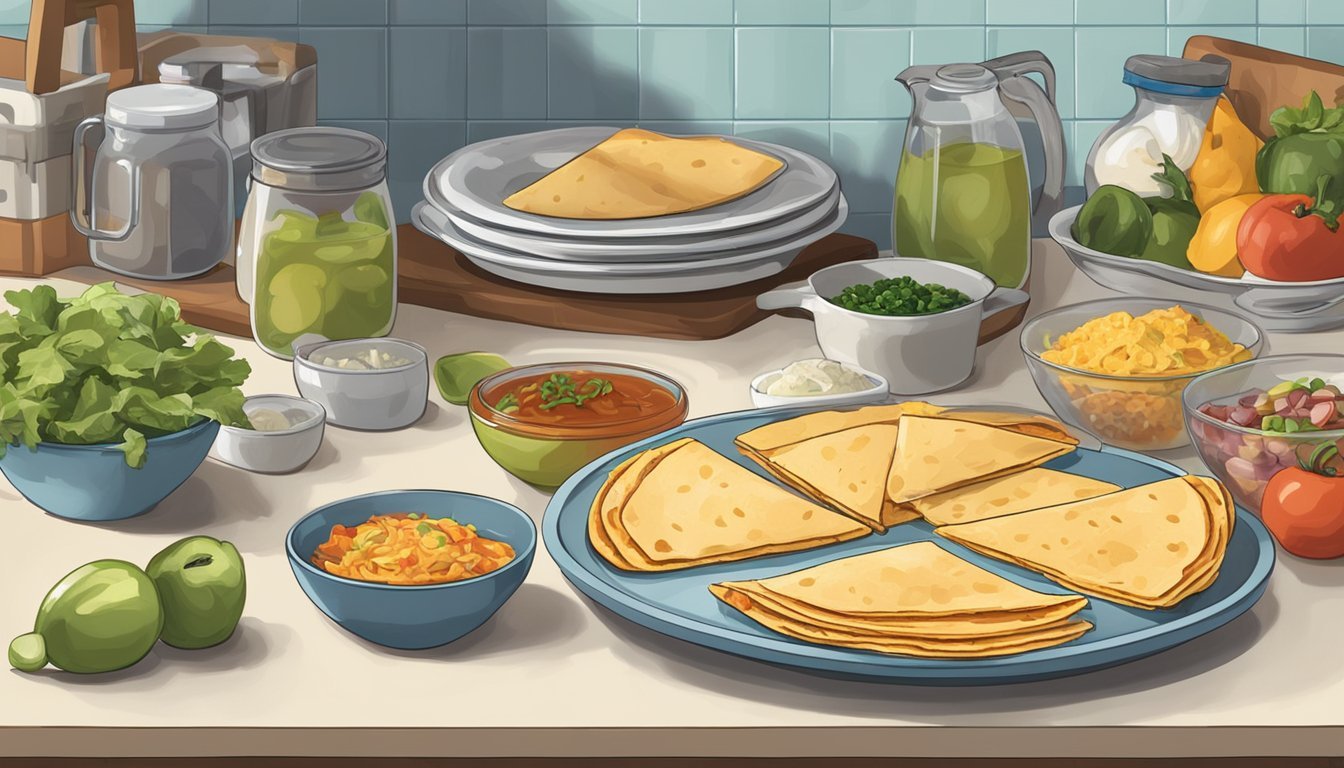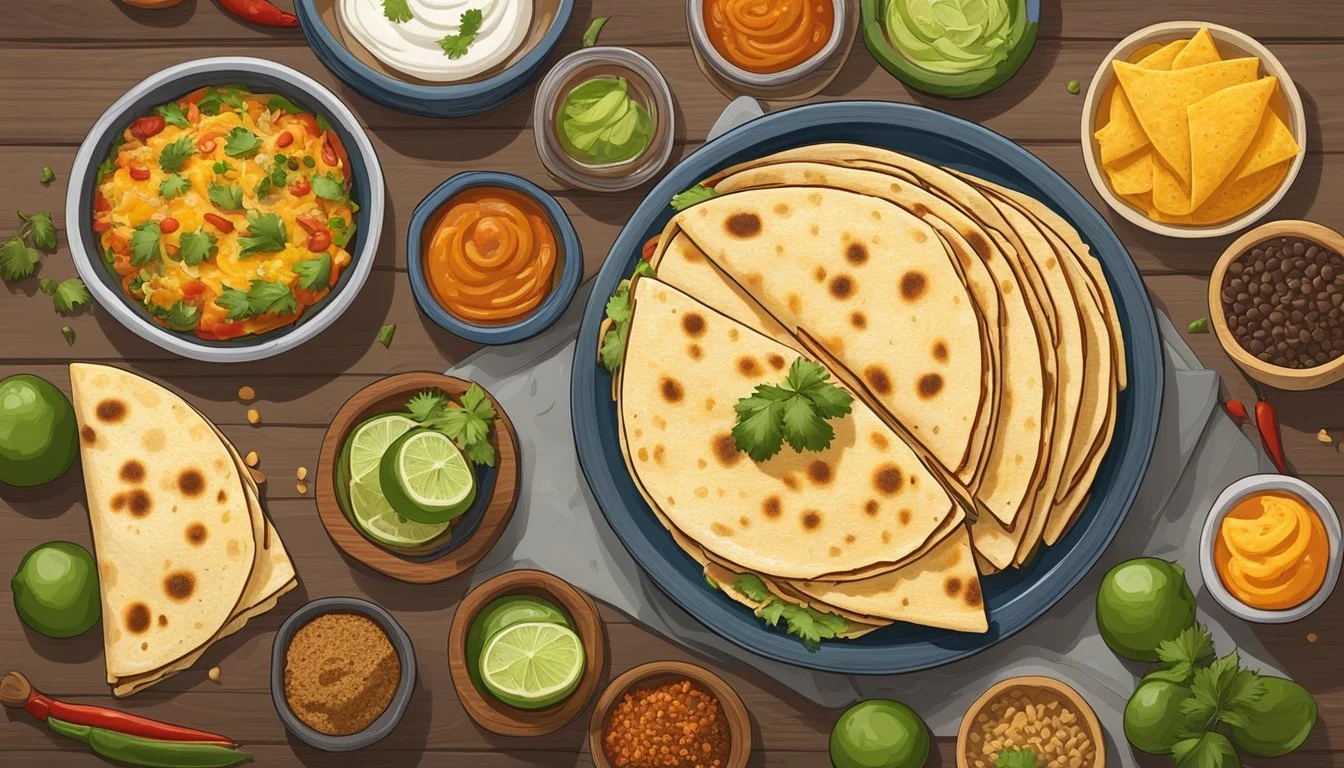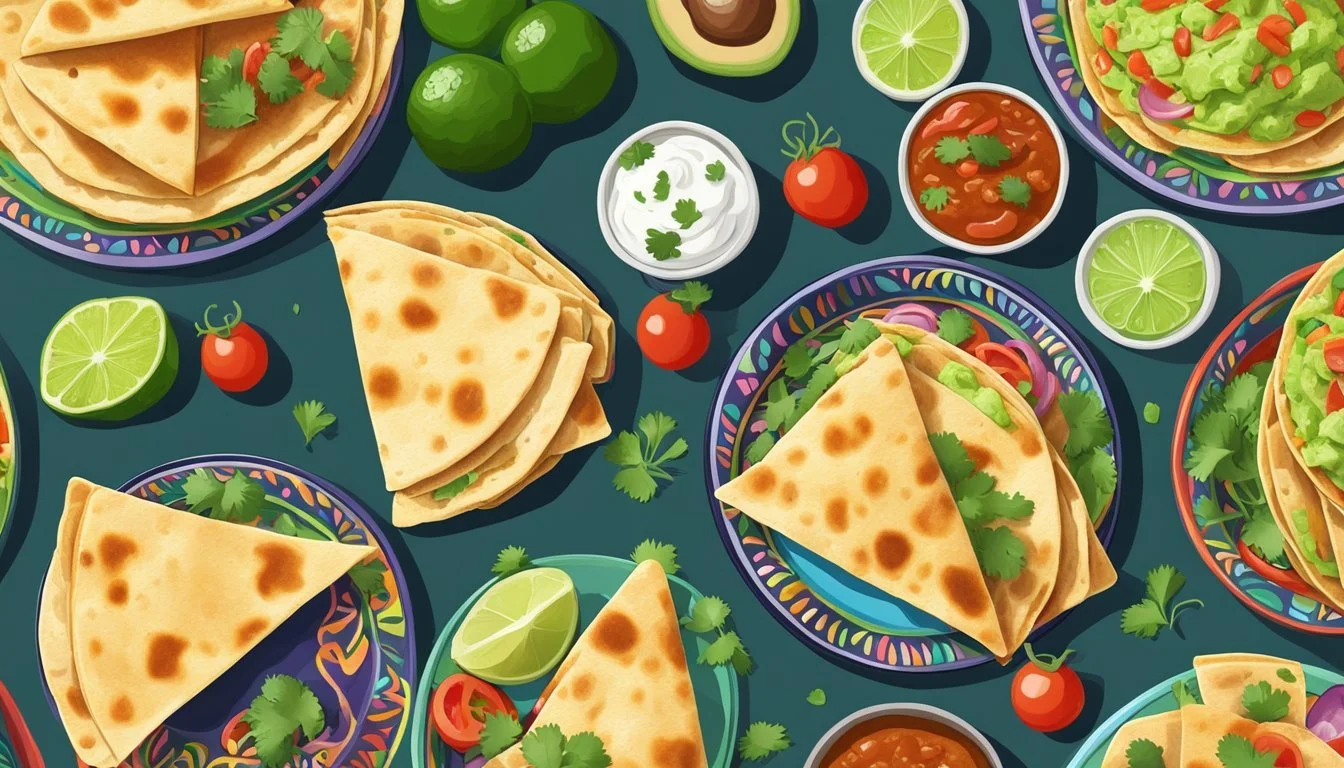How Long Do Freshly Prepared Quesadillas Last?
Understanding Shelf Life and Storage Tips
Freshly prepared quesadillas are a popular and versatile dish that can be enjoyed as a quick snack or a hearty meal. The longevity of a quesadilla after it is made depends on the freshness of the ingredients and how it is stored. If a quesadilla is crafted using fresh ingredients, including a soft tortilla and a generous amount of cheese, and is promptly refrigerated, it can remain suitable for consumption for up to 3-5 days. The tortilla acts as a stable base enveloping the ingredients, while the cheese helps to keep fillings moist when cooled.
However, if the quesadilla contains pre-cooked ingredients or is left unrefrigerated for extended periods, the window for safe and enjoyable consumption narrows to just 1-2 days. Proper storage is key, as is quick refrigeration, to prevent the growth of harmful bacteria that could spoil both the taste and safety of the food. In general, quesadillas should be stored in airtight containers to maintain their quality and prevent them from absorbing odors from other foods in the refrigerator.
It's important to note that the specific ingredients used can also influence the shelf life of a quesadilla. For instance, quesadillas with a meat filling such as chicken should be consumed within a safer timeframe, as cooked chicken can be kept in the refrigerator for up to 3 days. Each ingredient's shelf life should be considered to ensure overall freshness and to determine the best consumption window for a quesadilla after preparation.
Fundamentals of Quesadilla Preparation
Creating an exceptional quesadilla relies heavily on the quality of ingredients, adept preparation techniques, and the art of building deep, rich flavors.
Choosing the Right Ingredients
The foundation of any good quesadilla is the tortilla. One can choose between flour or corn tortillas, with flour being the more common and easier to work with due to its flexibility. For cheese, options like shredded Monterey Jack, Oaxaca, and cheddar provide a melty and flavorful experience. It's key to select fresh ingredients for fillings like chicken, vegetables, beans, and cilantro.
Preparation Techniques
The technique for preparing quesadillas affects their texture and taste. Cooks typically employ a skillet, oven, or pan to heat the quesadilla. Regardless of the method, ensuring the temperature is correct is paramount for achieving a crispy exterior without burning. A moderate amount of oil may be brushed on the skillet or tortilla to prevent sticking and enhance crispness.
Cooking Method Temperature Notes Skillet Medium heat Frequently used for quick and simple preparation. Oven 350-400°F (177-204°C) Useful for an even, crisp texture, especially for larger batches.
Building Flavors
Quesadillas offer versatility in flavor with the addition of spices such as chili powder, cumin, oregano, and salt. Toppings and sides like salsa, sour cream, guacamole, and pico de gallo not only add layers of taste but also texture and freshness to each bite, complementing the gooey cheese and fillings. It's important to layer these flavors thoughtfully to ensure a well-balanced quesadilla.
Proper Storage Methods
Proper storage of freshly prepared quesadillas is crucial to maintaining freshness and preventing spoilage. The methods vary significantly between short-term and long-term storage, each tailored to optimize the shelf life of the quesadillas.
Short-Term Storage
For those planning to enjoy their leftover quesadillas within a few days, refrigeration is the best option. Quesadillas should be stored in the fridge at a temperature of 40°F or below to prevent the growth of harmful bacteria. It is recommended to store them within two hours of preparation to ensure safety. Here are the specific steps for refrigeration:
Wrap the quesadillas individually in aluminum foil or parchment paper. This helps to keep them from drying out.
Place the wrapped quesadillas in an airtight container to protect them from any odors in the fridge.
Refrigerated quesadillas can be expected to maintain quality for 3 to 4 days.
Long-Term Freezing
For extended preservation, freezing is the most effective method. This option is ideal for those who want to extend the shelf life of their quesadillas well beyond a few days. Here’s how to properly freeze quesadillas:
Allow the quesadillas to cool to room temperature; then, wrap each one in aluminum foil or parchment paper, followed by a layer of plastic wrap to prevent freezer burn.
Place the wrapped quesadillas in airtight containers or heavy-duty freezer bags.
Label the containers or bags with the expiration date, which is typically up to 6 months after freezing.
To reheat, one can thaw the quesadillas in the fridge overnight and then warm them up in an air fryer or oven for best results.
Reheating for Best Quality
For the best quality, one must reheat quesadillas in a way that preserves the dish's crisp exterior and melty interior. The choice of reheating method plays a crucial role in achieving these results.
Traditional Oven Method
Heating quesadillas in a traditional oven retains the crispiness of the tortilla while ensuring the cheese is properly melted. To do this effectively:
Preheat the oven to 350 degrees Fahrenheit.
Place the quesadilla on a baking tray to allow for even heat distribution.
Heat for approximately 10 minutes or until the quesadilla turns golden brown.
Microwave and Skillet Techniques
These methods offer speed and convenience:
Microwave: For quick reheating, use 30-second bursts. However, this may not maintain the crispiness.
Skillet Technique:
Heat the skillet over medium heat.
Reheat each side of the quesadilla for about 1 minute or until it's hot to the touch, adding a fine layer of oil for extra crispness.
Using Air Fryer or Toaster Oven
An air fryer or toaster oven can effectively reheat quesadillas, providing a crispy texture akin to the initial preparation:
Preheat to 350ºF (180ºC).
Place the quesadilla in the fryer basket without stacking.
Heat for 3-4 minutes.
Toaster Oven:
Preheat to the same temperature as a traditional oven.
Reheat for a slightly shorter duration than in an oven, checking for the desired golden brown color and crispiness.
Each method ensures one enjoys quesadillas that are close to freshly made, with attention to texture and internal temperature.
Maximizing Freshness and Taste
When it comes to maintaining the quality of freshly prepared quesadillas, the texture of a crispy exterior and the taste of melty cheese are paramount. Vigilance in sealing and storage methods can preserve the flavors and prevent the texture from becoming soggy.
Preventing Soggy Quesadillas
The key to avoiding soggy quesadillas lies in addressing moisture control. To maintain a crisp exterior, one should allow the quesadillas to cool down before storing them to prevent steam from softening the tortilla. It's recommended to store them in a way that minimizes moisture build-up:
Cool Down: Place the quesadillas on a wire rack for a few minutes after cooking.
Paper Towels: Layer paper towels between each quesadilla when stacking to absorb excess moisture.
Sealing and Wrapping Techniques
Properly sealing freshly prepared quesadillas is crucial for preserving their flavor and texture. The right technique involves using materials that protect the quesadillas from air exposure and prevent moisture from seeping in:
Wrap Tightly: Use aluminum foil to wrap individual quesadillas, ensuring that they are sealed well.
Airtight Container: For additional protection, place the wrapped quesadillas in an airtight container before refrigerating. This method not only secures the melty cheese but also helps to maintain the distinct flavor of the protein within.
Health and Safety Considerations
When it comes to freshly prepared quesadillas, understanding food safety risks is crucial to prevent foodborne illness and to ensure that food is consumed when it is at its best quality. Proper storage is essential to extending the shelf life and maintaining the quality of quesadillas.
Understanding Food Safety Risks
Temperature is a significant factor in maintaining food safety. The USDA identifies the “danger zone” for bacterial growth in foods as temperatures between 40°F and 140°F (4°C to 60°C). Freshly prepared quesadillas should not sit out at room temperature for more than 2 hours to minimize food safety risks. If in an environment above 90°F (32°C), the safe window reduces to 1 hour. Bacteria such as Salmonella and E. coli can rapidly multiply in the danger zone, leading to increased risk of foodborne illnesses.
Safe Temperature Range: Below 40°F (4°C) or above 140°F (60°C)
Room Temperature Rule: 2 hours maximum
Hot Environment Rule: 1 hour maximum if above 90°F (32°C)
Identifying Spoilage Signs
Quesadillas, like any other fresh food, have a limited shelf life and will eventually spoil. Visual inspection and smell are straightforward methods to identify spoilage. Signs include:
Soggy tortillas
An off-smell particularly from the filling
Visible mold growth
Any discoloration or texture changes in the cheese or meat components
If any of these signs are present, it is best to discard the quesadilla to avoid consuming potentially hazardous food. Always adhere to expiration dates when using store-bought ingredients to ensure the final product is safe to eat.
Visual Spoilage Indicators: Mold, discoloration, texture changes
Olfactory Spoilage Indicators: Off-smells or unusual odors
Proper storage is vital; quesadillas should be refrigerated within the 2-hour window, and they are typically safe to consume within 3-4 days when stored at a temperature below 40°F. For longer storage, freezing is an option, extending the shelf life to 2-3 months.
Beyond Quesadillas: Alternative Uses for Leftovers
Leftovers from quesadilla night need not go to waste. They can be transformed into entirely new and delicious meals, or the ingredients themselves can be repurposed in creative ways.
Creating New Meals
Enchiladas: One can easily convert leftover quesadilla fillings into enchiladas. Simply roll the fillings in fresh tortillas, place them in a baking dish, smother them with enchilada sauce, sprinkle with cheese, and bake until bubbly.
Stew: Any leftover chicken, especially from quesadillas or a rotisserie chicken, can become the base for a hearty stew. Add the chicken to a pot with stock, vegetables, and beans for a nourishing meal.
Utilizing Leftover Ingredients
Grilled Cheese Sandwich: Leftover quesadilla ingredients like cheese and even leftover chicken can elevate a grilled cheese sandwich to a gourmet level.
Black Beans: Those leftover black beans from your quesadilla night? They can serve as a great protein addition to salads, soups, or even as a simple side dish, seasoned to taste.
Cultural and Dietary Adaptations
In the diverse landscape of quesadilla preparation and consumption, there exist significant regional differences and personalized adaptations to meet various dietary preferences. These modifications are rooted in cultural practices and the broad spectrum of ingredients available in different areas.
Regional Variations and Traditions
Mexican quesadillas are traditionally made using local Mexican cheeses like Oaxaca cheese, Chihuahua cheese, and Monterey Jack cheese. Each region in Mexico may have its own variant of the quesadilla. For instance, a restaurant in the state of Chihuahua might use the region's namesake cheese, known for its melting qualities, to create a quesadilla reflective of local culinary tradition.
Mexico City: Commonly includes Oaxaca cheese, which is stringy when melted, much like mozzarella.
Northern Mexico: Often filled with Monterey Jack cheese, known for its mild flavor and easy melting attribute.
Southern Mexico: Quesillo, or Oaxaca cheese, is popular here, serving as a gooey base for vegetables and meats.
Customizing for Dietary Preferences
Quesadillas are remarkably versatile, allowing modifications to suit diverse dietary needs and preferences. A restaurant may offer gluten-free tortillas to cater to customers with gluten intolerances or celiac disease. Additionally, vegetarian quesadillas stuffed with a mix of vegetables like bell peppers and red onion are quite common.
Gluten-Free Alternatives: Use of corn tortillas that are naturally gluten-free.
Vegetarian Options: Inclusion of roasted or sautéed vegetables as the filling.
Cheese Substitutes: Utilization of non-dairy cheese options for those following a vegan diet.
The adaptability of quesadillas ensures they remain a staple in various cultures and dietary regimens, proving this dish's universal appeal and its continual evolution in culinary practices around the globe.
Nutritional Information
The nutritional profile of a quesadilla can vary based on the ingredients and portion sizes. This section provides a focused look at the caloric content and protein provision of this popular dish.
Caloric Content and Serving Sizes
A typical quesadilla consists of a flour tortilla filled with cheese and often includes other ingredients such as chicken, beans, or vegetables. The calorie count for a single serving, which usually equates to one quesadilla, can range significantly. On average, a cheese quesadilla may contain approximately 300 to 500 calories. When chicken or other protein-rich ingredients are added, the calorie count can be higher.
In terms of protein, a standard cheese quesadilla provides about 15 grams of protein, which can increase to approximately 31 grams when filled with a hearty portion of chicken. Protein is an essential macronutrient that helps build and repair body tissues, among other functions.
Advanced Quesadilla Techniques
Mastering advanced quesadilla techniques can elevate this classic dish from ordinary to extraordinary, ensuring the quesadillas are flavorful and enticing.
Expert Grating and Melting Methods
For the ideal melt, one should opt for freshly grated cheese rather than pre-packaged varieties. Freshly grated cheese lacks anti-caking agents, allowing for a smoother melt. A mix of it and Monterey Jack is recommended for a sublime balance of flavor and meltiness, perfect for chicken and cheese quesadillas. Using a low and slow cooking approach will enable the cheese to melt evenly, avoiding the risk of unappealing, rubbery textures.
Innovative Filling Combinations
Quesadillas provide a versatile canvas for culinary creativity. A bold, yet harmonious combination like charred corn, diced pepper, and spiced shredded chicken can offer a delightful texture and flavor contrast. To introduce a novel twist, incorporate ingredients such as roasted sweet potatoes or caramelized onions for added depth and complexity to the traditional chicken and cheese quesadilla recipe.
Creative Serving Suggestions
When presenting freshly prepared quesadillas, one can elevate their overall appeal by focusing on complementary garnishes and well-paired side dishes. Not only do these additions add visual interest, but they also enhance flavor and provide a variety of textures.
Garnishes and Toppings
The right garnishes can transform a simple quesadilla into a memorable dish. Consider dollops of sour cream and guacamole for creaminess and a burst of fresh flavor. A drizzle of hot sauce adds a spicy kick, catering to those who appreciate a little heat with their meal. If one prefers a fresh and crunchy texture, sprinkling thinly sliced red bell pepper provides color and a slightly sweet accent. Consider these toppings:
Sour cream: A cool contrast to a warm quesadilla
Guacamole: Creamy texture with a rich, savory taste
Hot sauce: Adds vibrant spice that can bring forward the other flavors
Pairing with Side Dishes
On weeknights, simplicity is key, yet one should never compromise on taste. A quesadilla paired with a side of beans, either black or pinto, offers a fulfilling combination that is both effortless and nourishing. For a refreshing complement, a side salad with a citrus-based dressing makes for a light, zesty counterpoint to the quesadilla's savory notes. Possible side dishes include:
Beans: A hearty and healthy choice, adding both protein and fiber
Citrus-dressed salad: Its acidity cuts through the richness of the quesadillas


